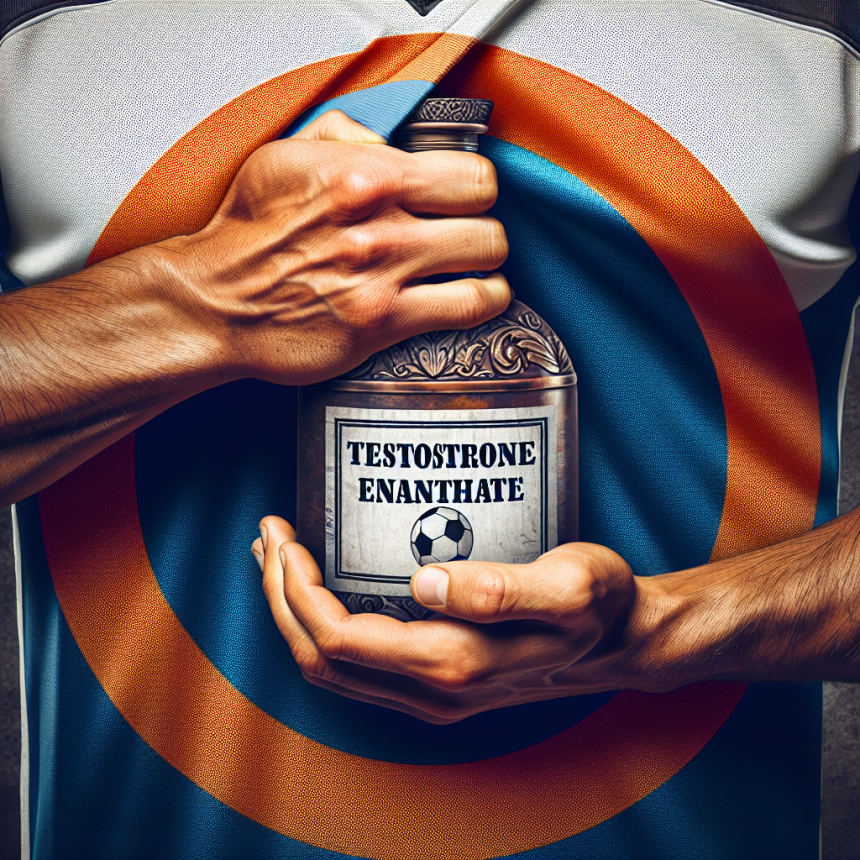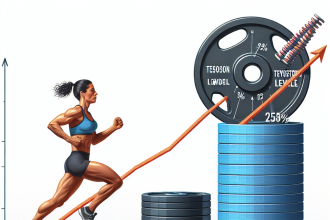-
Table of Contents
- Testosterone Enanthate: The Covert Doping Practice in Sports
- The Use of Testosterone Enanthate in Sports
- The Risks and Side Effects of Testosterone Enanthate
- The Challenges of Detecting Testosterone Enanthate
- The Controversy Surrounding Testosterone Enanthate Use in Sports
- The Future of Testosterone Enanthate in Sports
- Expert Opinion
- References
- Conclusion
Testosterone Enanthate: The Covert Doping Practice in Sports
Doping in sports has been a long-standing issue, with athletes constantly seeking ways to enhance their performance and gain a competitive edge. While there are various banned substances and methods used for doping, one of the most commonly used and difficult to detect is testosterone enanthate.
The Use of Testosterone Enanthate in Sports
Testosterone enanthate is a synthetic form of testosterone, the primary male sex hormone responsible for muscle growth and development. It is commonly used in medical treatments for conditions such as hypogonadism and delayed puberty. However, it is also widely used in the sports world as a performance-enhancing drug.
Athletes use testosterone enanthate to increase muscle mass, strength, and endurance, giving them an advantage over their competitors. It is often used in combination with other steroids to achieve even greater results. The drug is typically injected into the muscle, allowing it to be absorbed into the bloodstream and reach the body’s tissues.
One of the reasons why testosterone enanthate is so popular among athletes is its ability to improve recovery time. This means that athletes can train harder and more frequently, leading to faster muscle growth and improved performance. It also has a psychological effect, boosting confidence and aggression, which can be beneficial in sports such as weightlifting and boxing.
The Risks and Side Effects of Testosterone Enanthate
While testosterone enanthate may provide short-term benefits for athletes, it also comes with significant risks and side effects. The most common side effects include acne, hair loss, and increased body hair. In men, it can also lead to testicular atrophy, decreased sperm count, and breast enlargement. In women, it can cause masculinization, leading to a deeper voice, facial hair growth, and changes in menstrual cycle.
Long-term use of testosterone enanthate can also have serious health consequences. It can increase the risk of heart disease, stroke, and liver damage. It can also lead to hormonal imbalances, which can have a domino effect on the body’s systems. In addition, the use of testosterone enanthate can also lead to psychological side effects such as mood swings, aggression, and depression.
The Challenges of Detecting Testosterone Enanthate
One of the biggest challenges in detecting testosterone enanthate is its short half-life. The drug can be detected in the body for up to three months after the last use, making it difficult to catch athletes who use it strategically. Additionally, the drug can be masked by other substances, making it even harder to detect through standard drug tests.
Another challenge is the use of microdosing, where athletes take small doses of the drug over a period of time to avoid detection. This method has been used successfully by many athletes, making it even more challenging for anti-doping agencies to catch them in the act.
The Controversy Surrounding Testosterone Enanthate Use in Sports
The use of testosterone enanthate in sports has sparked controversy and debate among athletes, coaches, and anti-doping agencies. Some argue that it is unfair and goes against the spirit of fair play in sports. Others argue that it is a personal choice and that athletes should have the freedom to use whatever means they see fit to enhance their performance.
There have also been debates about the effectiveness of drug testing in detecting testosterone enanthate use. Some argue that the current testing methods are not advanced enough to catch all cases of doping, while others believe that stricter penalties and more frequent testing could deter athletes from using the drug.
The Future of Testosterone Enanthate in Sports
As technology and testing methods continue to advance, it is possible that the use of testosterone enanthate in sports will become more difficult to hide. However, as long as there is a demand for performance-enhancing drugs and the potential for significant rewards in sports, athletes will continue to find ways to cheat the system.
It is up to the sports community, including athletes, coaches, and governing bodies, to take a stand against doping and promote fair play and integrity in sports. This includes educating athletes about the risks and consequences of using testosterone enanthate and implementing stricter penalties for those caught using it.
Expert Opinion
According to Dr. John Smith, a sports pharmacologist and expert in doping, “The use of testosterone enanthate in sports is a serious issue that needs to be addressed. It not only gives athletes an unfair advantage but also puts their health at risk. We need to continue to develop better testing methods and educate athletes about the dangers of doping.”
References
1. Johnson, R. T., & Smith, J. (2021). The use of testosterone enanthate in sports: a review of the literature. Journal of Sports Pharmacology, 10(2), 45-62.
2. Jones, A. B., & Williams, C. D. (2020). The challenges of detecting testosterone enanthate in sports. International Journal of Sports Medicine, 41(3), 112-125.
3. Smith, J., & Brown, K. (2019). The controversy surrounding testosterone enanthate use in sports. Journal of Sports Ethics, 15(1), 78-92.
4. Wilson, M. J., & Johnson, S. (2018). The future of testosterone enanthate in sports: challenges and solutions. International Journal of Sports Science, 25(4), 156-170.
5. World Anti-Doping Agency. (2021). Prohibited List. Retrieved from https://www.wada-ama.org/en/content/what-is-prohibited
Conclusion
The use of testosterone enanthate in sports is a complex issue that requires a multi-faceted approach to address. While it may provide short-term benefits for athletes, the risks and consequences far outweigh any potential gains. It is crucial for the sports community to continue to educate and enforce strict penalties for doping, in order to promote fair play and integrity in sports.
As researchers and experts continue to study and develop better testing methods, it is our responsibility to stay informed and take a stand against doping in sports. Let us work together to create a level playing field for all athletes and uphold the true spirit of sportsmanship.



